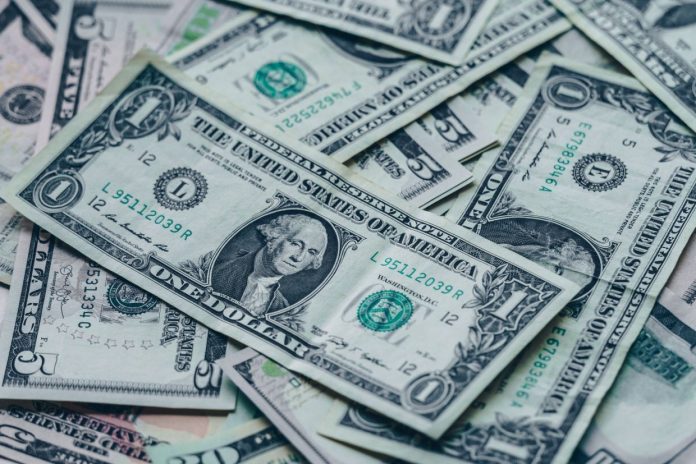
TOKYO: The dollar hit a fresh 15-month high versus the yen and hovered near multi-month peaks against other major peers on Thursday, ahead of a key U.S. jobs report that could offer clues on when the Federal Reserve will start to pare back stimulus.
The U.S. currency rose as high as 111.165 yen for the first time since March 26, 2020, before trading essentially flat compared to Wednesday at 111.095.
The dollar index, which measures the greenback against six counterparts, held just below a 2 1/2-month top of 92.451 reached the previous session, edging up on the day to 92.415.
The index posted its best month since November 2016 in June, driven by the Federal Open Market Committee (FOMC)’s surprise hawkish shift in the middle of that month, when policymakers signalled two interest rate hikes by the end of 2023.
Traders are looking to Friday’s U.S. nonfarm payrolls report for confirmation of that outlook, with economists polled by Reuters expecting a gain of 700,000 jobs last month, compared with 559,000 in May, and an unemployment rate of 5.7% versus 5.8% in the previous month.
The greenback extended gains on Wednesday after data showed U.S. private payrolls increased by a greater-than-expected 692,000 jobs in June.
“I see the balance of risk skewed to an above-consensus print” for nonfarm payrolls, Chris Weston, head of research at broker Pepperstone in Melbourne, wrote in a note to clients.
“A payrolls north of 800k could get U.S. bond yields higher and put a further bid in the USD.”
If the euro breaks convincingly below current levels versus the dollar, “this could be a magnet to attract USD flow,” he said, adding “JPY seems universally weak.”
The euro edged down to $1.1851 after dipping as low as $1.1845 on Wednesday for the first time since April 6.
The benchmark 10-year U.S. Treasury yield slipped as low as 1.4630% in Asia before edging up to 1.4747%.
Safe-haven assets including Treasuries, the dollar and the yen have been supported by the spread of the highly contagious Delta variant of COVID-19, which is threatening the global reopening narrative.
Indonesia, Malaysia, Thailand and Australia are all battling outbreaks of COVID-19 and tightening curbs, and Spain and Portugal announced restrictions for unvaccinated British tourists.
The Aussie dollar, seen as a proxy for risk appetite, slid 0.2% to $0.7488, approaching last week’s six-month low at $0.7478, with Australia’s major centres of Sydney, Brisbane, Perth and Darwin all under lockdown.
The Reserve Bank of Australia will meet next Tuesday to decide on policy, and officials have already flagged it will announce its decisions on the fate of its three-year yield target as well as its broader quantitative easing programme, which is set to end in September.
RBA Governor Philip Lowe will also hold a news conference afterward, in a break from recent procedure.
“If the RBA maintains a dovish tilt and does not take a step towards ending unconventional monetary policy, AUD is unlikely to regain losses sustained since the FOMC meeting,” Commonwealth Bank of Australia strategist Joseph Capurso wrote in a client note.
“AUD will remain heavy for the next few weeks at least,” possibly testing $0.7442, he said.
Sterling slipped 0.1% to $1.38115, edging toward a recent two-month low of $1.37865. – Reuters























